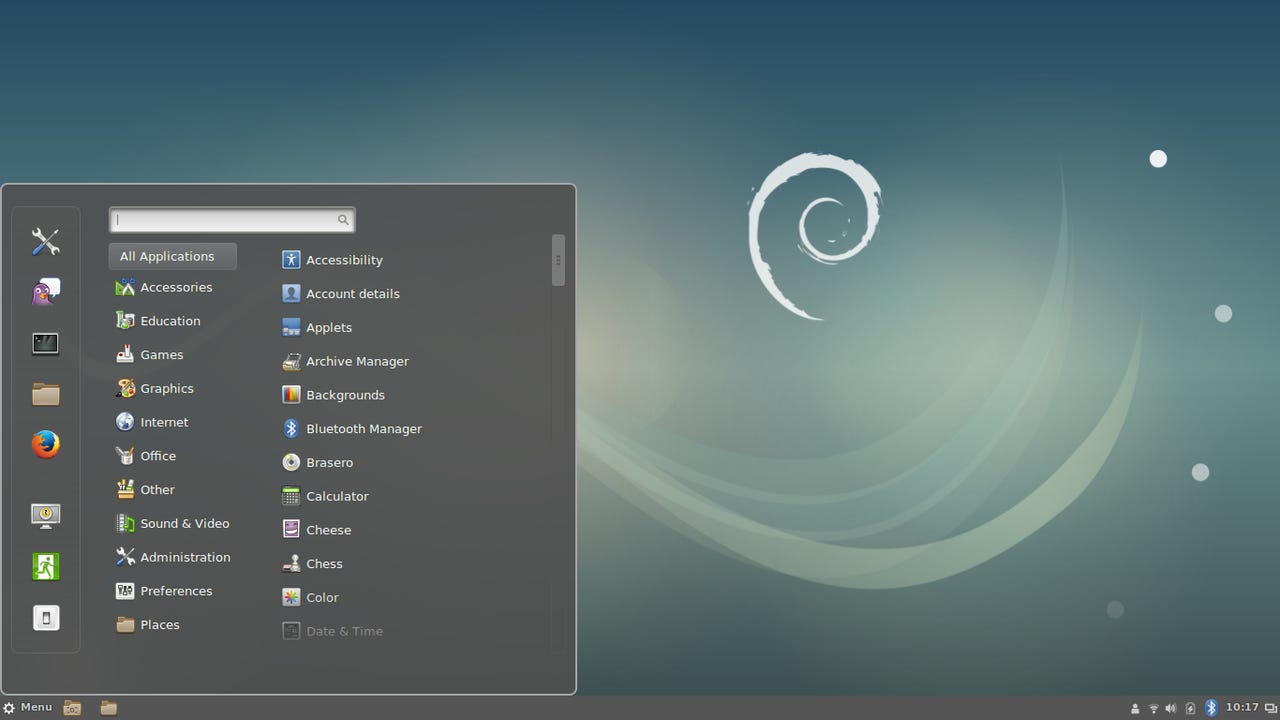Debian GNU/Linux: Jessie is out, Stretch is in, Buster is started

The recent release of Debian GNU/Linux 9 (stretch) has gotten me thinking about the Debian development/release cycle again.
It is actually pretty interesting, and quite different from any other Linux distribution that I am familiar with. There are three main Debian branches - "stable", "testing" and "unstable", with names (taken from characters in the Toy Story movies) given to each branch, and numbers assigned to each release as they move to "stable". That may sound confusing, but a little bit of an example should clear it up.
Until mid-June, the Debian "stable" release was Jessie. You could install and run this release by downloading a Debian Installation Image or a Debian Live Image. Once you had it running, it was identified in the file /etc/debian_version as "8.x" (where x identifies the roll-up version), and in /etc/os_release as "Debian GNU/Linux 8 (jessie)".
Likewise until June, the "testing" release was Stretch. There are two ways (at least) that you could install and run it; probably the most common way is to install the stable release, and then change the repositories to say "testing" rather than "stable" or "jessie".
The identification is a bit different than it is for the stable release; /etc/debian_version says "stretch/sid", and /etc/os_release says "Debian GNU/Linux stretch/sid". The difference is that the releases do not get numbers until they move to "stable", and the testing release also shares its name with the "unstable" release, which is always "sid".
What happened in June when Stretch officially became the stable release is sort of interesting (and is the reason for this post).
First, after the testing release was frozen in preparation for it becoming the stable release, the identification files were changed, to "9" and "Debian GNU/Linux 9 (stretch)". This actually happened before the actual release, so for some time those who were running Debian testing actually saw it identified as stable.
Then when the official release announcement came out, not much happened for those who were running "testing". The identification was already there, and nothing new was happening quite yet... so some users started to get concerned that they were no longer following the Debian testing branch.
Not to worry, it just takes a bit of time for the dust to settle and for the testing branch to start moving again.
The testing branch has now been christened "Buster", and the updates which came through this week have changed the identification files to say "buster/sid". Development will now continue in that branch until at some point in the future the whole cycle starts again, and Buster becomes the stable distribution.
Of course I have Debian installed on every computer that I own. I used to keep the Debian stable branch on a few of them, just so that I had it around for reference. But I finally decided that there was no real need for that, and there were enough advantages to running the much more current Debian testing branch, so now everything is running the testing branch.
The screen shot below is from my ASUS R414S, running Debian buster and the Cinnamon desktop:

Debian GNU/linux Buster (testing) Cinnamon Desktop
Some details about versions of major packages:
Note that it is still running Cinnamon 3.2, although 3.4 was released at the beginning of May, and of course was included in the recent Mint 18.2 release. Now that updates are flowing into the testing branch again, I assume that will catch up soon.
I have installed the Xfce desktop version on my Samsung N150 Plus, which looks like this:
Debian GNU/Linux Buster Xfce Desktop
I then added the i3 desktop packages to that. It is working very well, and the response and performance are considerably better than I get with Linux Mint Xfce and i3 on the same system.
Debian GNU/Linux Buster i3 Desktop
But a new Debian release causes more ripples than just in its own branches. The next step is that all of the other Linux distributions which are derived from Debian stable will have to update their base and then make a new release.
Perhaps the two best known of these derivatives are Raspbian and Linux Mint Debian Edition (LMDE). From what has been said in each of their blogs recently, I don't think either of them will be coming out with a Debian Stretch-based release in the very near future.
In the Release Announcement of the recent Raspbian update, Simon Long mentioned that they are working on a Debian Stretch version of Raspbian, and they hope to release it sometime over the summer. Fingers crossed on that one...
On the other hand, the Linux Mint Blog said in its Monthly News for June that their developers are working on porting the updates from Mint 18.2 (including Cinnamon 3.4 and MATE 1.18) to LMDE, and when that is done there will be a new release. It doesn't mention Stretch, so I suspect that they aren't close to doing that yet.
Distributions which are based on Debian testing won't have a new release to catch up with, but they are still going to have a bit of work to do. Because of the various stages of "freeze" in preparation for the Stretch stable release, there is likely to be a backlog of updates waiting to be incorporated into the testing distribution.
So, if you are currently running Debian GNU/Linux, make sure that you have picked up all the latest updates. If you are running one of the Debian derivatives, keep an eye out for a new release coming in the near future. Either way, things are likely to be active for a while.